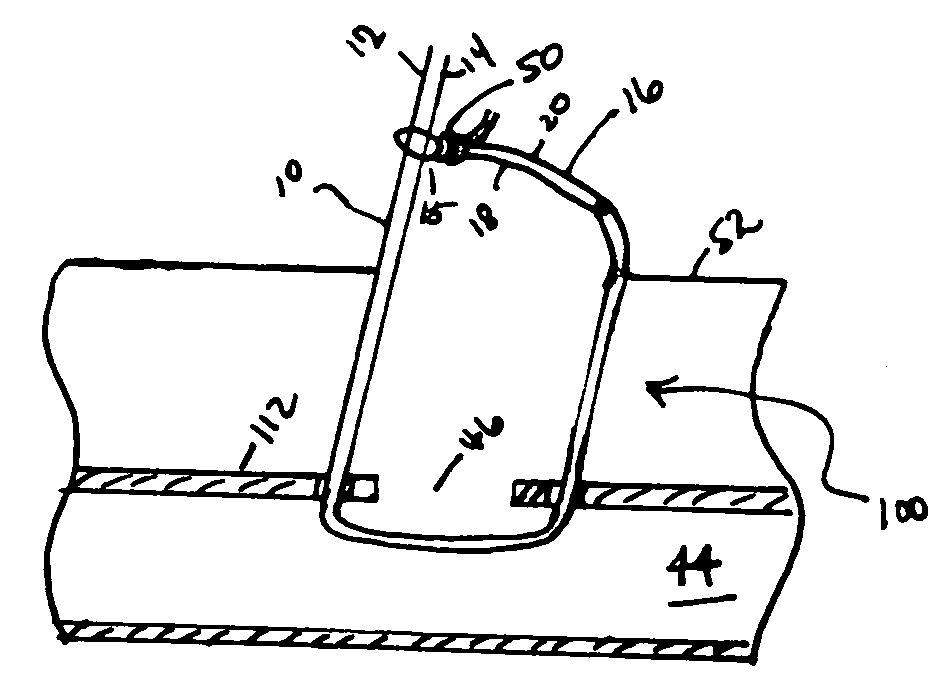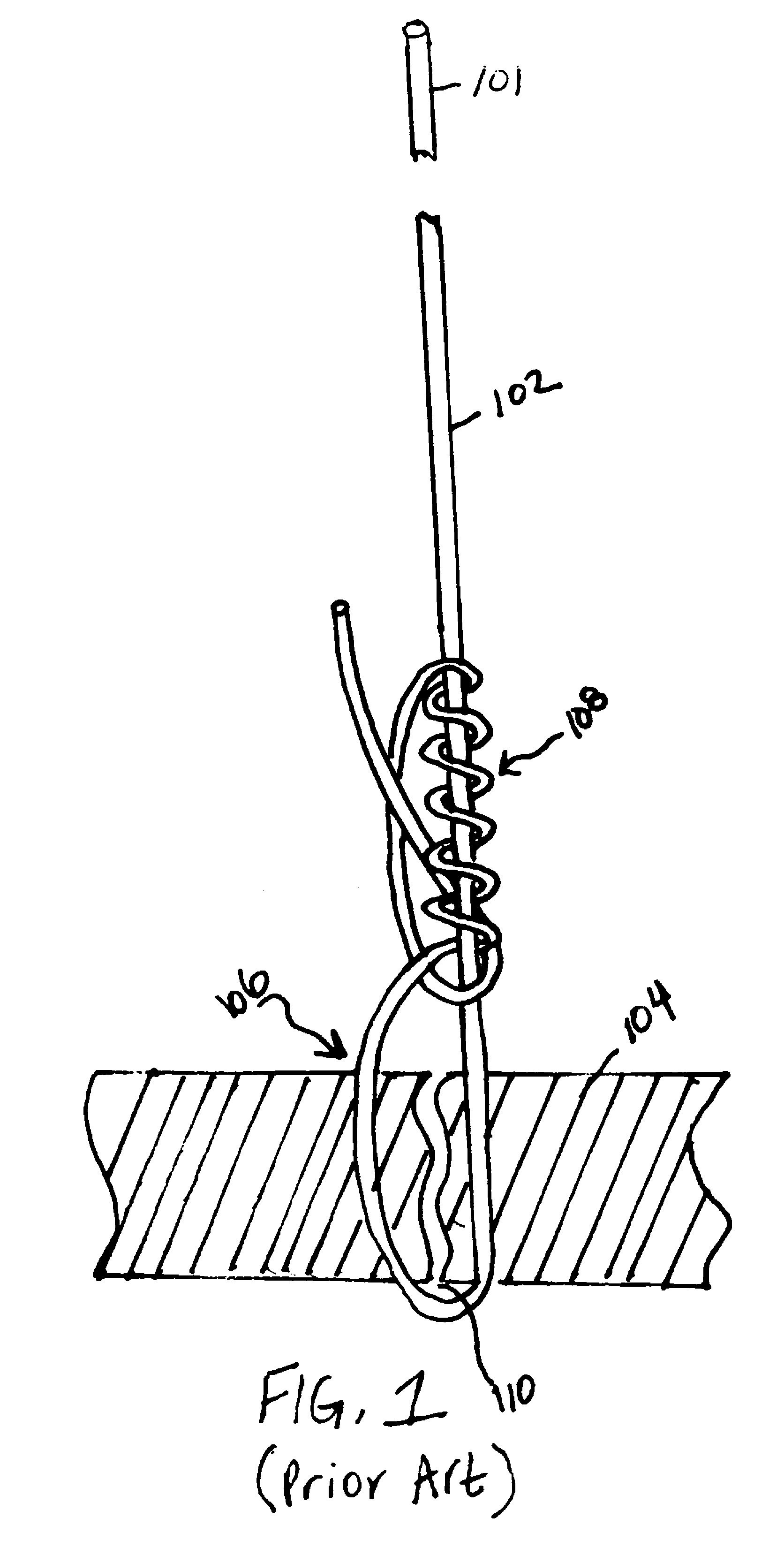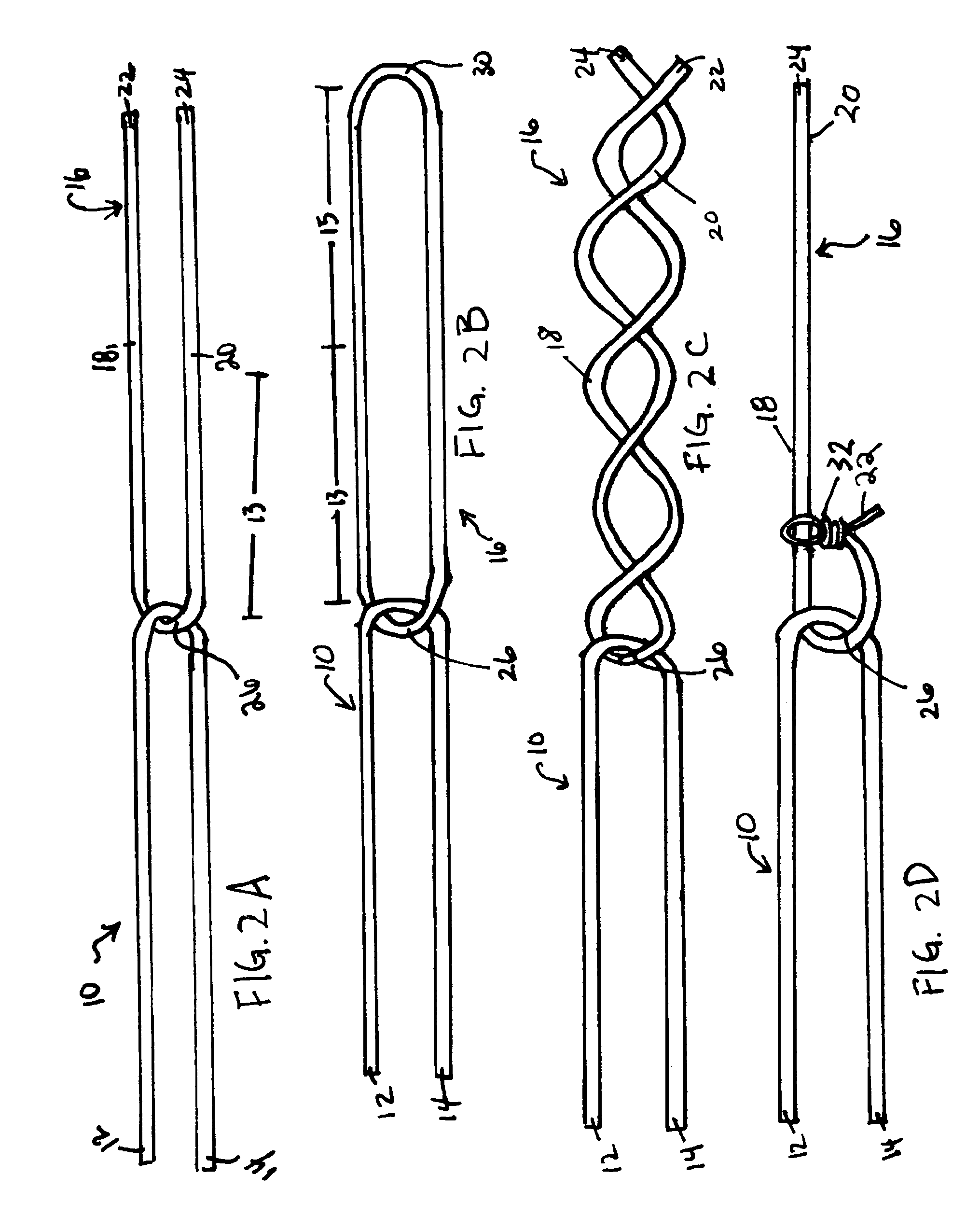Cinching loop
a loop and loop technology, applied in the field of clamping loops, can solve the problems of increasing the overall time of the operation, affecting the overall efficiency of the operation, so as to limit the flow of blood and reduce the complexity
- Summary
- Abstract
- Description
- Claims
- Application Information
AI Technical Summary
Problems solved by technology
Method used
Image
Examples
example 1
[0035]FIGS. 4A-4B illustrate the cinching loop used in combination with a sheath and hemostatic promoting material in accordance with an alternative embodiment of the present invention. A sheath 60, or any other device such as a pusher, may be used to push the knot 50 toward the blood vessel puncture site 46. The sheath 60 may also deliver a hemostasis promoting material 62 to the puncture site 46 to ensure that hemostasis occurs at the puncture site 46 and within the adjacent tissue tract. Thus, the sheath 60 may act both as a pusher and a hemostatic promoting material delivery device.
[0036]Alternatively, the cinching loop may be used to position the hemostatic promoting material at the blood vessel puncture site as illustrated in FIG. 4B. With the hemostatic promoting material 122 in position at the blood vessel puncture site 46, the tissue cinching loop 100 initially formed by joining thread 16 to thread 10 such that the first and second segments of the first thread pass through ...
example 2
[0037]FIGS. 5A and 5B illustrate the cinching loop used in combination with a pusher and hemostatic promoting material in accordance with an embodiment of the present invention. Referring to FIG. 5A, when the cinching loop 100 is positioned around the blood vessel puncture site 46, the first thread 10 may be received by a lumen 132 of a pusher 134. This allows the user to keep first thread 10 taught or tensioned around the blood vessel puncture site 46. FIG. 5B illustrates the cinching loop and pusher at the blood vessel puncture site. The pusher 134 may have a hemostatic promoting material 136 positioned around a portion of the lumen 132 at the distal end 142 of the pusher 134. The hemostatic promoting material 136 may be surrounded by a dissolvable capsule 138, such as a gelatin capsule. When the capsule 138 is exposed to blood or other fluids, the capsule will dissolve thereby releasing the hemostatic material 136. The hemostatic material may then absorb the fluids and expand to ...
example 3
[0041]FIGS. 6A-6E illustrate the cinching loop used in combination with a pressure plug in accordance with an embodiment of the present invention. The pressure plug is described in detail in United States published patent application no. 2007 / 0282373 filed Nov. 24 2004, entitled “Hemostatic Pressure Plug” by inventors Mark Ashby, Roy D. Bertolet, Andrew Cragg, and Tin Tran, which is incorporated by reference herein in its entirety. FIGS. 6A and 6B illustrate the pressure plug 200 having suture retrieval needles 202a and 202b. The suture retrieval needles 202a, 202b may be secured on the pressure plug 200 with any absorbable and / or sealing material as described above. The suture retrieval needles 202a, 202b may be made of any biocompatible, flexible, durable material that will allow the needles 202a, 202b to be in a collapsed position for delivery within a patient, retract and retain its shape when exposed within the blood vessel lumen, and be able to pierce the blood vessel wall. Th...
PUM
 Login to View More
Login to View More Abstract
Description
Claims
Application Information
 Login to View More
Login to View More - R&D
- Intellectual Property
- Life Sciences
- Materials
- Tech Scout
- Unparalleled Data Quality
- Higher Quality Content
- 60% Fewer Hallucinations
Browse by: Latest US Patents, China's latest patents, Technical Efficacy Thesaurus, Application Domain, Technology Topic, Popular Technical Reports.
© 2025 PatSnap. All rights reserved.Legal|Privacy policy|Modern Slavery Act Transparency Statement|Sitemap|About US| Contact US: help@patsnap.com



